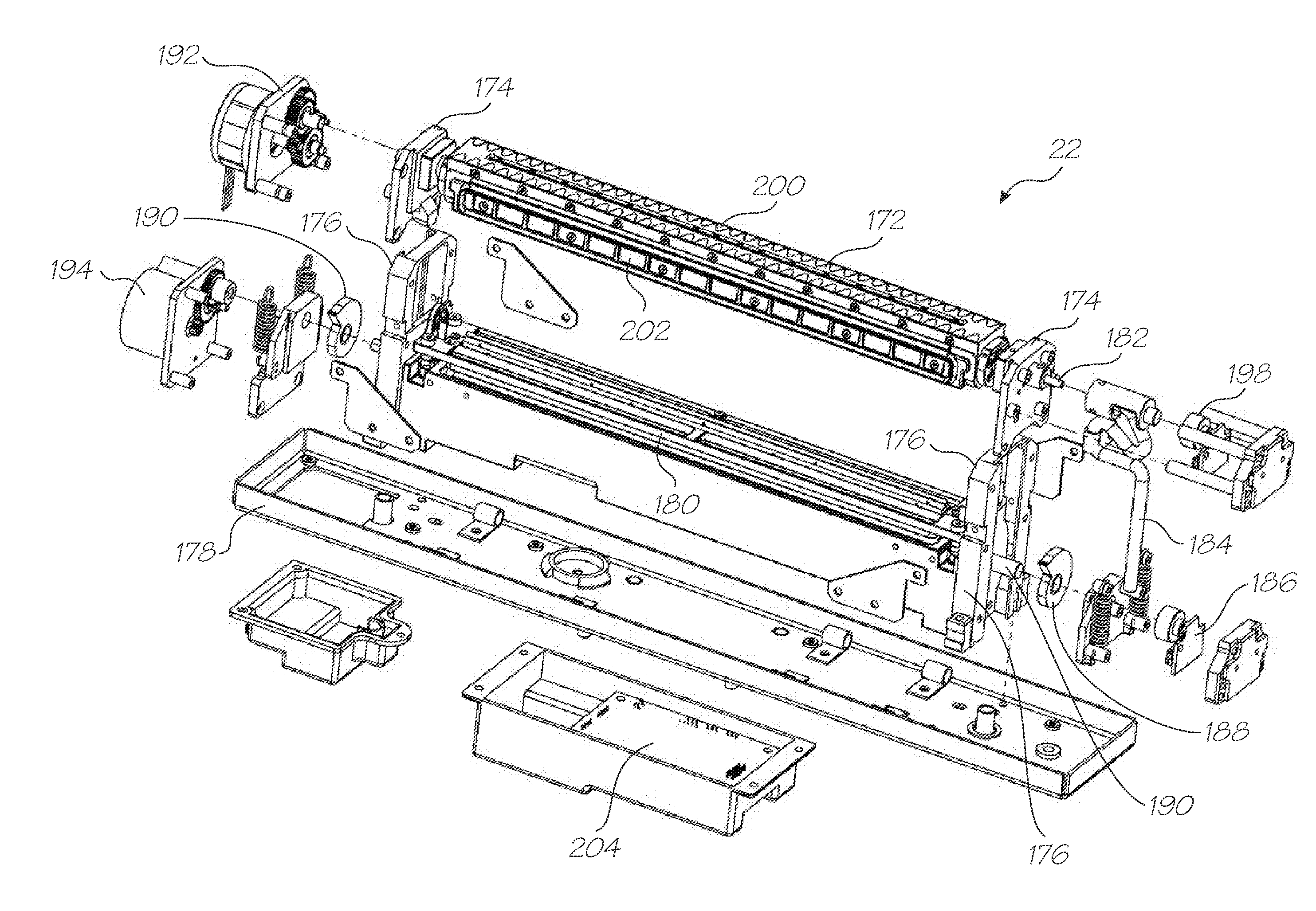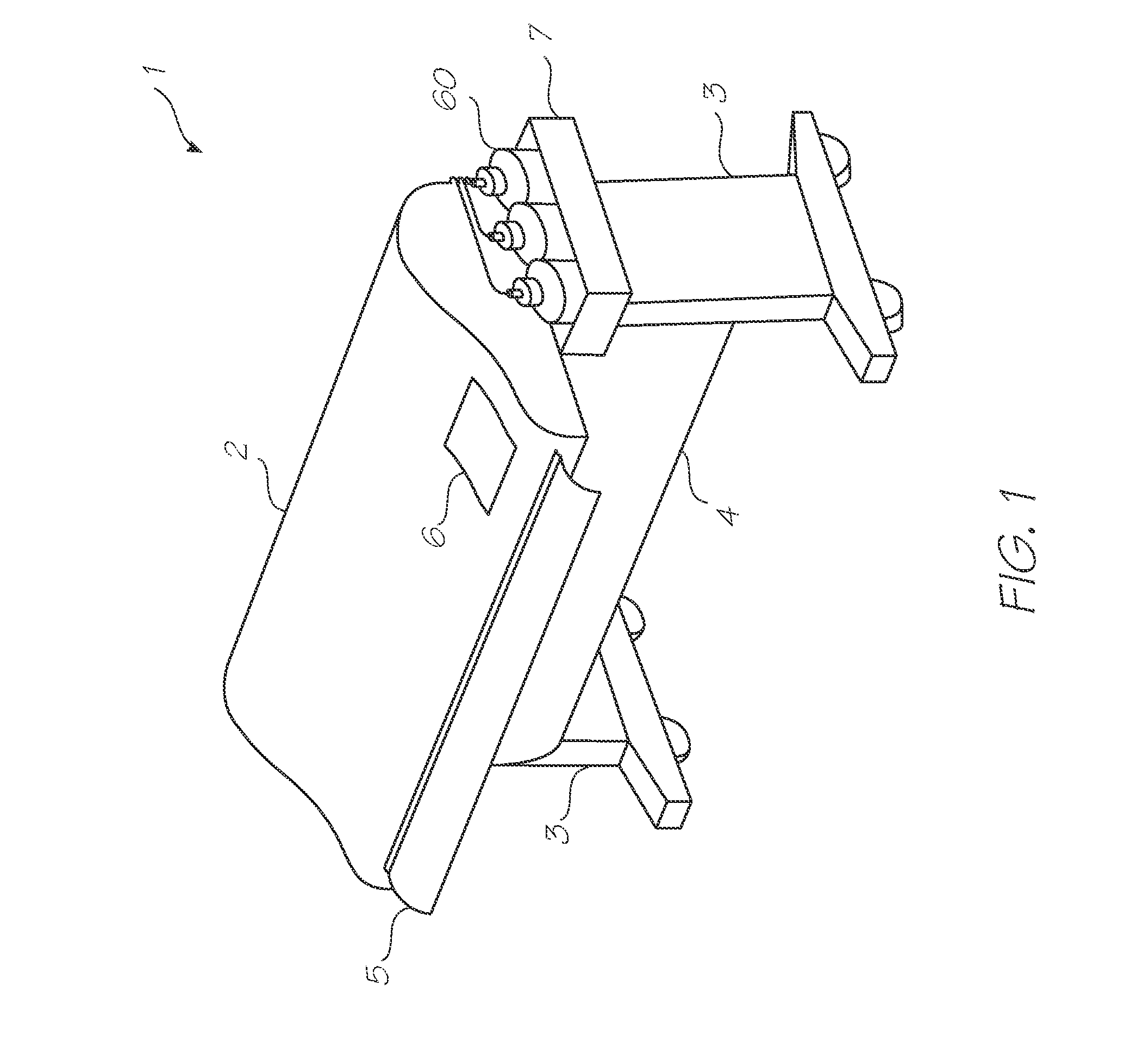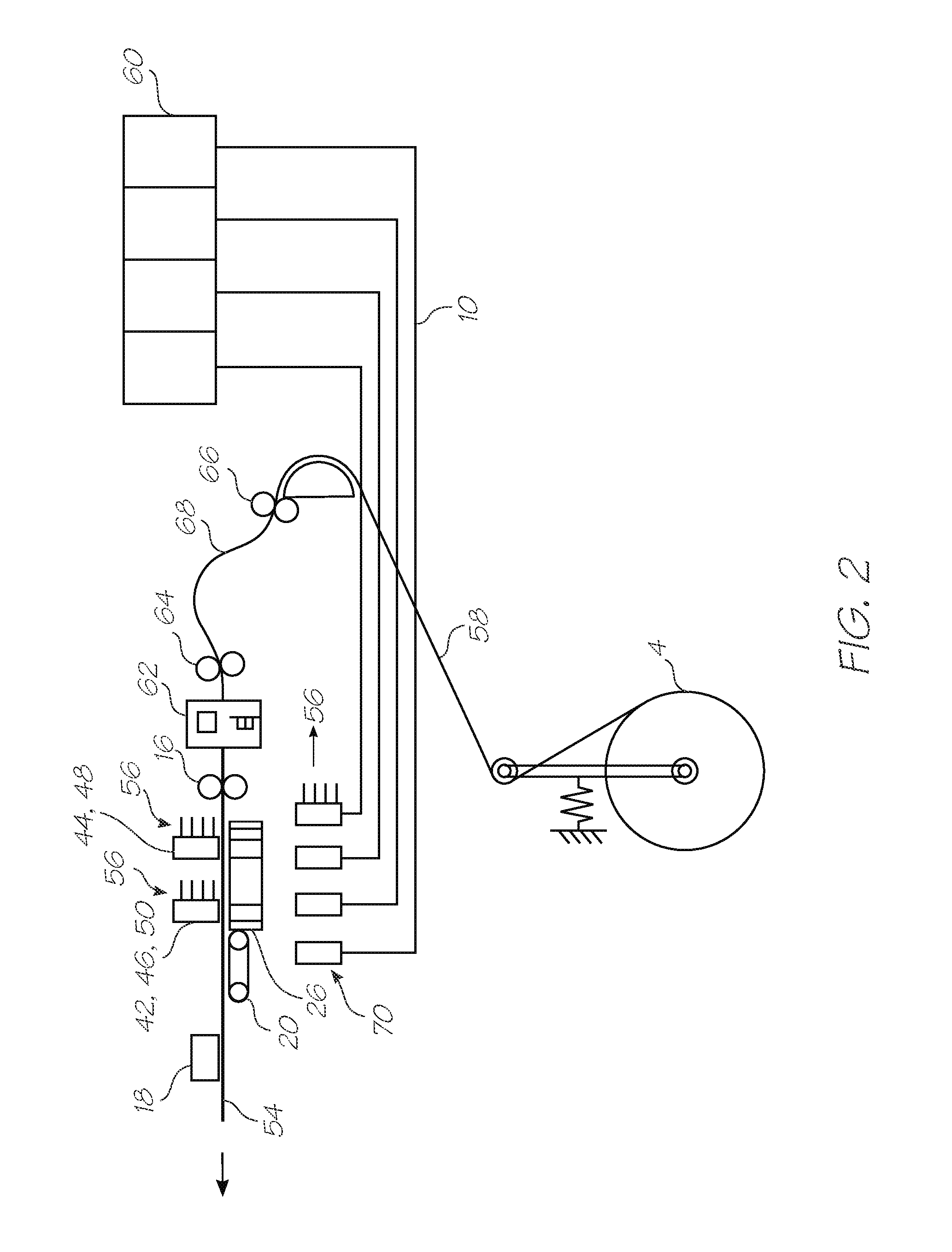Unfortunately, wide format printers are excessively slow as the printhead prints in a series of transverse swathes across the page.
However, proposals for a pagewidth printhead
assembly have not become commercially successful because of the functional limitations imposed by standard printhead technology.
This is impractical for most domestic and commercial environments, as the cooling
system for the printer would probably require some type of external venting.
Without external venting, the room housing the printer is likely to over heat.
Each technology may have its own advantages and disadvantages in the areas of cost, speed, quality, reliability,
power usage, simplicity of construction operation, durability and
consumables.
However, scanning printhead based printing systems are mechanically complex and slow to maintain accurate control of the scanning motion.
Time delays are also due to the incremental stopping and starting of the media with each scan.
Such printers are high performance but the
large array of inkjet nozzles is difficult to maintain.
For example wiping, capping and blotting become exceptionally difficult when the array of
nozzle is as long as the media is wide.
This adds size to the printer and the complexity of translating the printheads or servicing elements in order to perform printhead maintenance.
These spike wheels can not be incorporated into any drive rollers and so add considerable bulk to the printing mechanism.
Any media buckling or lack of positional control of the leading or trailing edges within the print zone can result in visible artifacts.
Maintaining printheads (i.e. routine wiping, capping and blotting etc) requires maintenance stations that add bulk and complexity to printers.
This adds lateral size to the printer and the complexity of translating the printheads to the service modules in order to perform maintenance.
When each printhead returns to its operative position, its alignment with the other printheads is prone to drift until eventually visible artifacts demand realignment of all the printheads.
Both of these system designs suffer from drawbacks of large printer width dimensions, complicated design and control, and difficulty in maintaining printhead alignment.
As the resolution increases, the drop volumes are reduced and more prone to becoming
aerosol.
The design of these systems becomes more challenging when the printing system utilizes a fixed printhead
assembly spanning a media path that allows the use of varying media widths.
Portions of the printhead
assembly that extend beyond the media can clog as water in the nozzles evaporate and the localized ink
viscosity increases.
Thus there is a problem of
aerosol generation and the related problem of a need to exercise drop generators across and beyond the media.
These problems have not been properly addressed.
However, larger printheads require a higher ink supply flow rate and the pressure drop in the ink from the ink inlet on the printhead to nozzles remote from the inlet can change the drop ejection characteristics.
Individual pressure regulators integrated into each printhead is unwieldy and expensive for multicolor printheads, particularly those carrying four or more inks A system with five inks and five printheads would require 25 regulators.
Moreover long printheads tend to have large pressure drops with a single regulated source of ink.
A multitude of smaller ink supply tanks creates a high replacement rate which is disruptive to the operation of the printer.
Removing an old printhead can cause inadvertent
spillage of residual ink if it has not been de-primed before decoupling from the printer.
Active priming tends to waste a lot of ink as the nozzles are fired into a
spittoon until ink is drawn to the entire
nozzle array.
Forcing ink to the nozzles under pressure is prone to flood the
nozzle face.
Air bubbles trapped in printheads are a perennial problem and a common cause of print artifacts.
This is exacerbated by large arrays of nozzles because more ink is lost as the number of nozzles increases.
However, larger nozzle arrays and multiple separate nozzle arrays greatly increase the difficulty to maintain a constant printing gap.
This, of course, can lead to visible artifacts in the print.
Larger nozzle arrays are beneficial in terms of print speed but problematic in terms of ink supply.
This can lead to nozzle floods and wasted ink.
 Login to View More
Login to View More  Login to View More
Login to View More 


